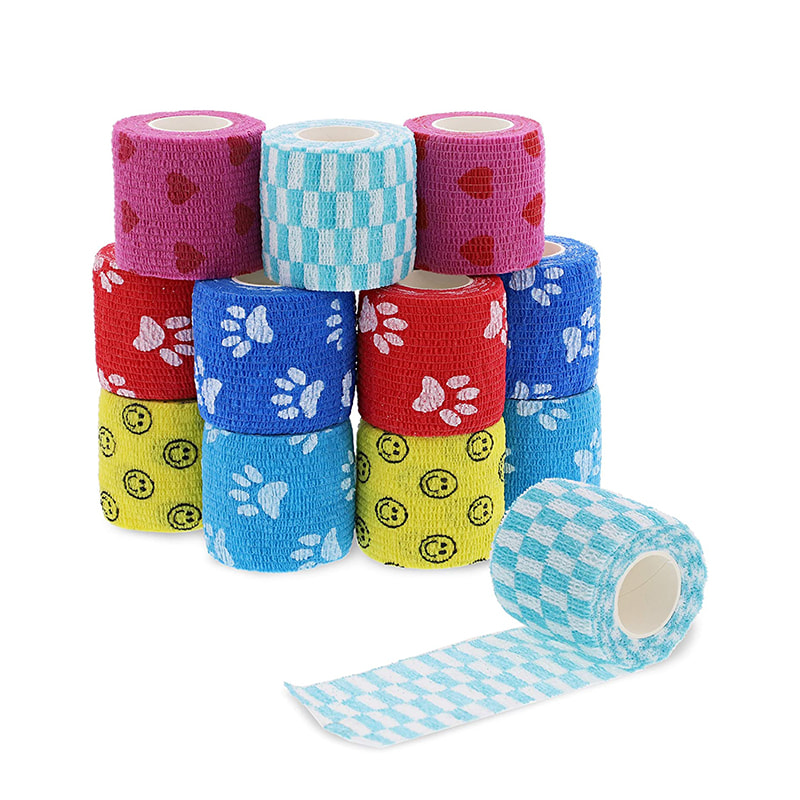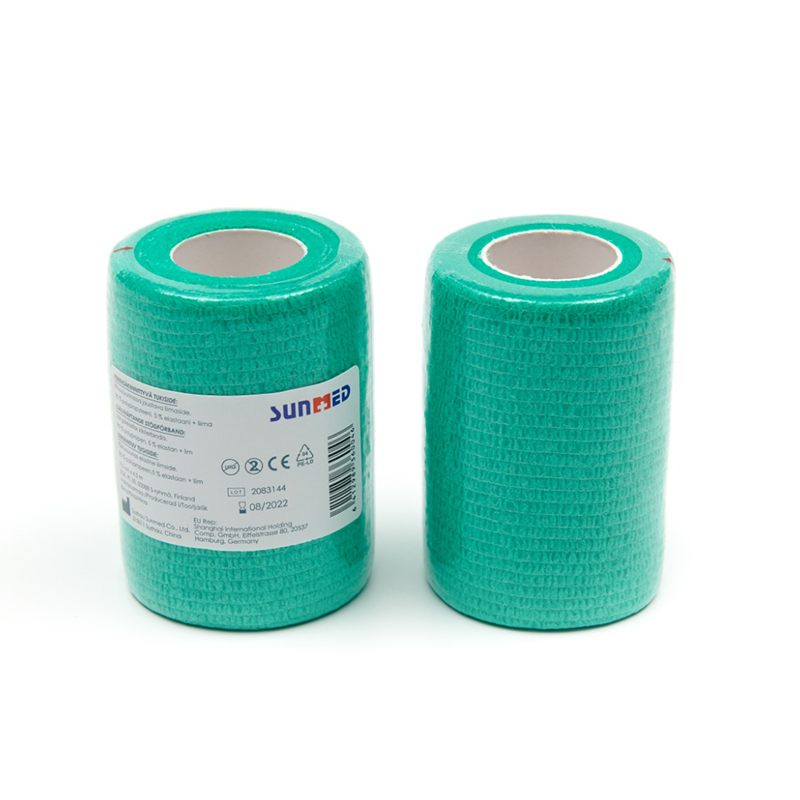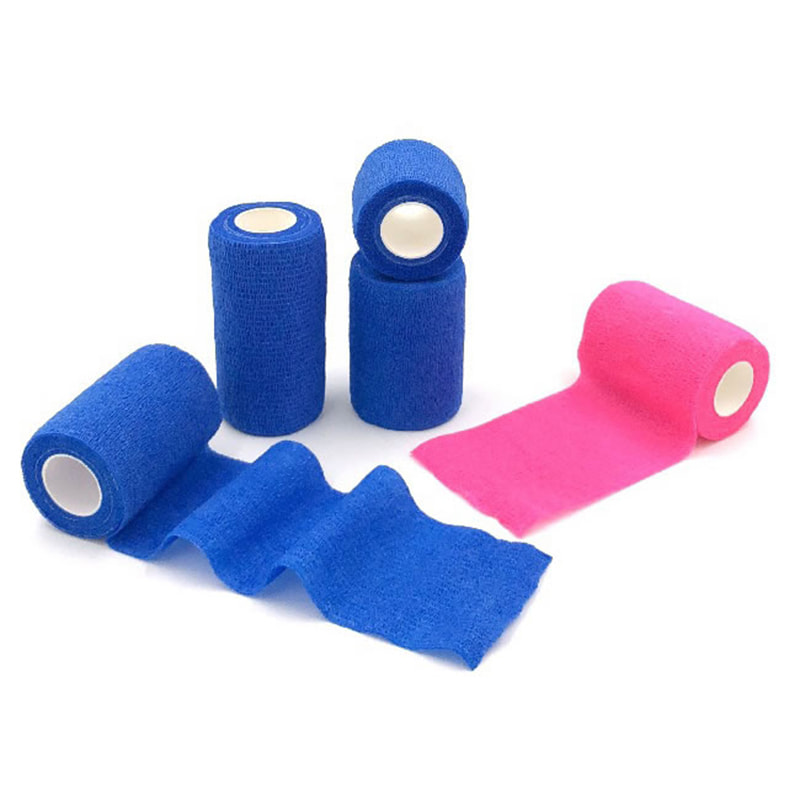Self-adhesive bandages wrap are a widely used medical product that is favored for its unique design and versatility. This bandage is mainly made of elastic material and has self-adhesive properties. It can be firmly fixed without additional tape or clips. It is often used in medical, sports and daily care.
The main materials of self-adhesive bandages wrap are usually polyurethane, cotton and other synthetic fibers. The choice of these materials not only ensures the elasticity and comfort of the bandage, but also provides good breathability and reduces irritation to the skin. In addition, the adhesive of self-adhesive bandages wrap is generally mild to ensure that it will not cause allergic reactions when attached to the skin.
Self-adhesive bandages wrap are widely used in the medical field and are often used to fix dressings, protect wounds and provide support. They can effectively prevent external bacterial infection and keep wounds clean. For trauma patients, self-adhesive bandages wrap can provide the necessary pressure and support to promote healing.

In sports medicine, self-adhesive bandages wrap are widely used for daily protection of athletes. Whether it is a sprain of the knee, ankle or wrist, the use of self-adhesive bandages can effectively relieve pain and provide additional stability. At the same time, their elasticity allows athletes to move without feeling restrained, ensuring flexibility.
Self-adhesive bandages wrap also play an important role in home care. They are suitable for bandaging small wounds, cuts or abrasions, especially in child care, and are loved by parents due to their ease of use and comfort. In addition, self-adhesive bandages can be used to fix ice packs or hot packs to effectively relieve pain.

Using self-adhesive bandages is very simple. First, make sure the wound is clean and dry, then tear off the appropriate length from the bandage and wrap it around the injured area according to the desired bandage method. It is recommended to bandage from bottom to top or from top to bottom to ensure that the bandage has uniform adhesion and pressure. When bandaging, avoid too tight to avoid affecting blood circulation. After use, simply tear off the bandage, which usually does not cause damage to the skin when removing it.
The advantages of self-adhesive bandages wrap are obvious. First, their self-adhesiveness makes the bandaging process quick and convenient, without the need for additional tools. Second, the elastic design of the bandage provides a comfortable fit and reduces friction and irritation to the skin. In addition, the breathable material enables the bandage to maintain moisture while avoiding the risk of infection.

Self-adhesive bandages wrap are also very waterproof and suitable for use when bathing or swimming, making it more convenient for patients in daily life. In addition, the variety of colors and patterns of bandages make it not only limited to medical use, but also can be used for personal decoration or style expression.
Self-adhesive bandages play an important role in modern medical care and daily care due to their convenience and versatility. Whether in hospitals, sports fields or home environments, they can provide users with comfortable and safe protection. When choosing and using self-adhesive bandages, understanding their materials, applications and methods of use can better play their role and ensure a safe and effective care experience. With the continuous development of technology, the future of self-adhesive bandages will also be broader and become an indispensable part of people's lives.


 English
English Español
Español русский
русский Français
Français Deutsch
Deutsch By Admin
By Admin

























